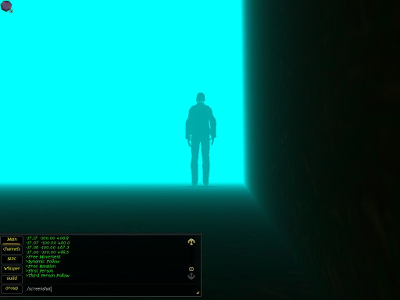The legacy code base on client side can best be described as a pile of tangled pointerisms and assorted CPP mess under the name of Planeshift (PS) on top of a smaller ball of ifdefism 1 and XMLade called CrystalSpace (CS), on top of a comparatively saner and at any rate smaller ball of CPP called Cal3d, the whole construction bursting with a lot of good intentions and precious little useful structuring or maintenance consideration. While sanity seems to quickly decrease from bottom (cal3d) up (to CS and then various parts of PS), what strikes one even more is that the whole thing if afflicted with a grave case of XML addiction that starts from CS and then simply comes to its ugly fruition in PS. It has been obviously written at the very top of the XML hype – everything and I do mean *everything* and everywhere is best described in XML! It could be argued that the authors simply wanted to have a lot of XML of their own but since they couldn’t do just that 2, they had to also do a graphics engine and a sort of game on the side, almost as a second consideration really. Come to think of it, why not call it then at least XMLSpace and XMLShift?
While CS itself has at least some clear initial design and therefore some structure (if a very clunky one at best of times mainly because the author really had too many good intentions), its main underlying assumptions are precisely the opposites of mine: besides the total focus on xml, there is also this obsession with event-driven (which makes it very hard to actually follow anything from one end to the other), the generic plugins (which again means that doing the simplest thing involves a huge scaffolding upfront) and the fact that the whole thing tries rather desperately to make itself “easy to use” by those who don’t understand (nor even look into) the code at the expense of course of those who do since there is no possible way to have one without the other. Leaving aside for a bit how one can never really do the work of others for themselves, the sad result is that tracking down anything in full becomes extremely difficult. The documentation helps here but only up to a point since it is not exactly up to date and more importantly, it doesn’t really focus on helping the reader understand the code – it focuses instead with all its good intentions on helping the reader use the library without really understanding it, as a sort of black or at best graying box. And moreover, pervasive everywhere, there is the wrong sort of “simplification”: while the weight of it all becomes obvious to the author too (it’s quite usual for various constructors to have at least 10 parameters and they are already several layers deep so they anyway call parent constructors with yet another set of parameters), he doesn’t see or choose a better abstraction that would help rather than hinder the effort. Instead, he arbitrarily fixes some bits and pieces: for instance, the terrain2 plugin simply expects the heightmap to be in a file called sectorName_heightmap in exactly the current path of the VFS 3. In other, fewer words, weaning the legacy code base off its unsavoury assumptions and xml-addiction so that it simply loads art as it becomes available is extremely frustrating and time-consuming, making the overall situation quite foggy blue with cornered cases and hardly anything useful in sight:

The art 4 that you just admired above might not look like much but it’s a big achievement on Euloran soil: for the first time in Euloran history, a Testy character (still sadly xml-based himself) made it outside the pre-defined sphere of the XML-Island and into the great unknown of non-predefined, non-xml, fully code-loaded and discovered as you go world! It’s true that the world is for now only a cube with rather sharp and unyielding corners and no landscape at all, it’s true that the very three suns that gave reasonable light on the Island look foggishly blue in here and it’s sadly true that the character itself is still trapped in the XML bubble. But it’s a working start and moreover it’s a seed that has just caught roots within the hostile soil of the legacy code so that it can grow out of it, hopefully discarding as it grows more and more of the unhelpful mess!
- This is a term of art, the logs will help you.[↩]
- Why? Why can’t you do *just that*, whatever it is you actually want, did you ever ask yourself?[↩]
- Virtual File System inside CS….[↩]
- In computer graphics EVERYTHING is art, ok? There is no such thing as mere fitted drawings and clumsy, clunky approximations, no, no. All the games have nothing but art in them! Hell, they *are* nothing but art. Well, of snorts, yes.[↩]
Comments feed: RSS 2.0
Mazel Tov
Sa fie!
[…] most of this month reading the graphics reference book3 and in parallel trying to make sense in a very practical way of the whole way in which Eulora’s client handles all the graphics part from the Planeshift (PS) […]
[…] remember reading the same words somewhere else, and I even know where. I’m not the first, nor even the second in line to look at large open sores coads, you […]